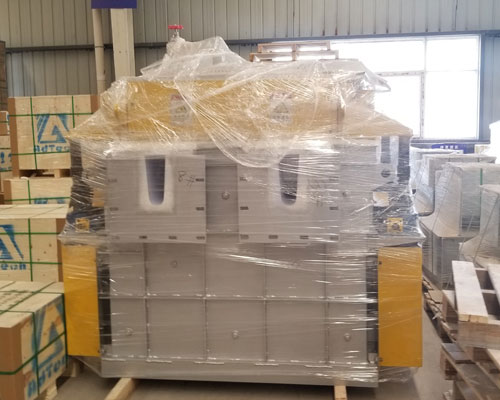Aluminum degassing unit has brought a major breakthrough in automation, high efficiency and cost-effective degassing. The principle of these machines requires that the rotor be able to generate very small inert bubbles that are evenly and evenly distributed throughout the molten metal pool.
For a long time, aluminum foundries have recognized the need for effective flux gas treatment to remove hydrogen and inclusions. Therefore, the recent development is to meet this requirement and achieve the best degassing efficiency.
Aluminum degassing equipment removes these undesirable components by bubbling gas, usually nitrogen, through molten metal.
The gas is usually introduced through a degassing rotor, which reduces the size of the bubbles and disperses the nitrogen gas throughout the molten metal bath.
When the generated bubbles rise through the molten metal mass, they absorb the hydrogen dissolved in the metal and remove it from the melt.
In addition, the non-metal solid particles are swept to the surface due to the floating effect of the bubbles, and then can be removed by skimming the metal.
Aluminum degassing equipment uses silicon nitride as a degassing rotor. The degassing rotor adopts a two-part assembly form with independent shaft and rotor head.
As the geometry of the rotor head decreases, the efficiency of hydrogen removal will decrease over time.
Eventually, the efficiency of the rotor head is reduced, the shaft becomes thinner to the breaking point, and the rotor assembly must be replaced.
Considering this failure mechanism, compared with existing foundries, the efficiency of the rotating degassing process should be improved by improving the material and the design of the rotor head to extend the life of the rotor and maintain its performance.
Aluminum degassing unit is the best choice for molten aluminum purification and degassing in the aluminum alloy industry.

According to the Rusal process engineer, molten aluminum is extremely reactive, so when aluminum comes in contact with moist air or wet tools, water will decompose and release hydrogen in the melt. Adtech China is negotiating with Rusal Aluminium on the progress of related projects on the online degassing device and the ceramic foam filter device.
Excessive dissolved gas will adversely affect the mechanical properties of the final aluminum casting. Anyone who manufactures castings knows that dissolved gases have an important effect on the distribution and number of holes and shrinkage. The level of dissolved hydrogen must be controlled to reduce waste. In order to control the gas in aluminum, metal casters must accomplish two things:
1. Prevent and reduce hydrogen entering the melt.
2. Measure and remove hydrogen before pouring.

